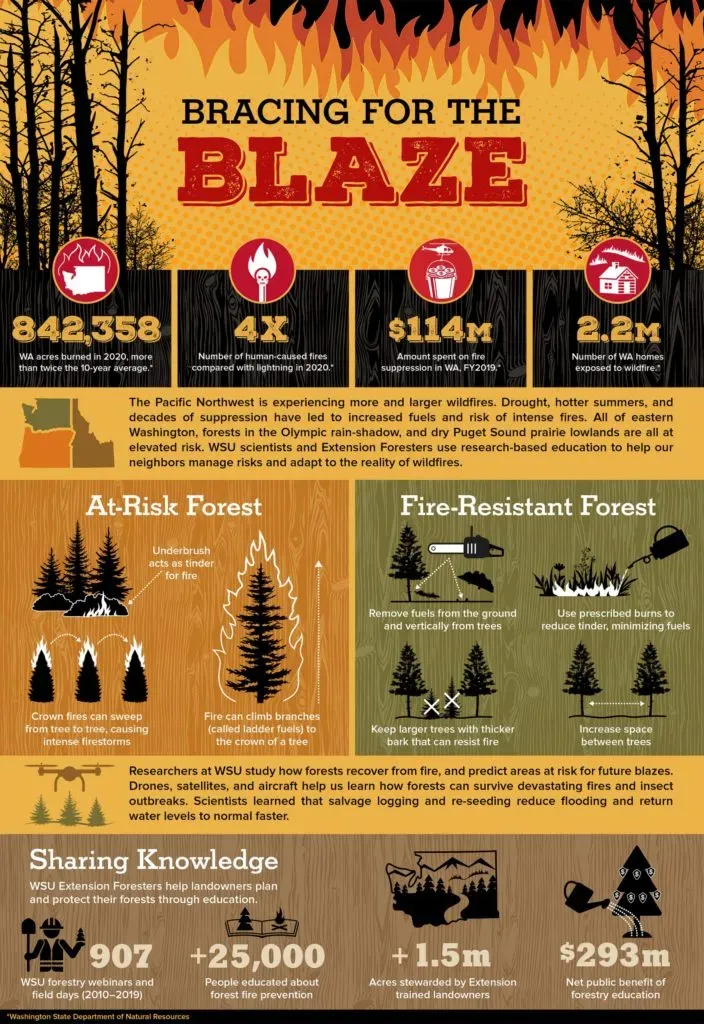The recent wildfire report commissioned by the town of Jasper has sparked significant debate, especially in the wake of devastating Alberta wildfires last summer. As the chief administrator, Bill Given, clarifies, the report’s portrayal by some media outlets is misleading and does not capture its comprehensive analysis of the incident. Amidst the political fallout, the Premier of Alberta has called for accountability, suggesting that the report wrongfully blames provincial efforts in wildfire management. This controversy illuminates critical issues around government accountability and the dynamics of emergency response during crises. In light of these discussions, understanding the implications and findings of the wildfire report is essential for fostering effective wildfire management strategies in the future.
The recent assessment concerning the catastrophic wildfires in Alberta has generated considerable discussion among officials and the public alike. In light of the devastating events in Jasper last summer, the town’s leadership faces scrutiny as they navigate perceptions of responsibility regarding local and provincial wildfire management practices. This situation raises questions around the nature of governmental accountability and the effectiveness of emergency response strategies employed throughout the firefighting efforts. As various stakeholders examine the details of the incident report, the debate reflects broader themes in disaster management and the interplay between municipal and provincial agencies during emergencies. Ultimately, a clearer understanding of these dynamics will be crucial for enhancing response efforts and protecting communities in future wildfire crises.
Overview of Jasper’s Wildfire Report
The wildfire report commissioned by the town of Jasper serves as a critical review of the devastating events that took place last summer. While the report aims to assess the effectiveness of the wildfire management strategies and emergency responses, it has sparked considerable controversy, particularly following comments from the Alberta Premier. Chief Administrative Officer Bill Given has been proactive in clarifying that the interpretation of the report’s intent may have been misconstrued by certain media outlets, leading to a perception of blame directed at the provincial government.
Given emphasized the importance of viewing the report in its entirety to appreciate the nuances involved in the findings. He pointed out that highlighting isolated excerpts, such as those critiquing the provincial involvement in firefighting efforts, could lead to a mischaracterization of the overall message. This comprehensive analysis not only seeks to understand the challenges faced during the wildfire but also highlights strengths within the wildfire management, demonstrating the collaborative effort between Jasper and various emergency response teams.
The Role of Government Accountability in Wildfire Management
Government accountability plays a pivotal role in effective wildfire management and emergency response. The recent Jasper wildfire report brings this aspect to the forefront, pointing out the need for clear roles and responsibilities among municipal, provincial, and federal entities during such crises. As per the findings, one significant issue that arose was the complexity introduced by the provincial government’s involvement, which reportedly hindered command structures already set up between Jasper and Parks Canada.
Critics argue that effective emergency management relies heavily on streamlined communication and decision-making processes. The report suggested that missteps from the provincial level not only delayed crucial firefighting strategies but also created political friction that diverted focus from urgent response efforts. This situation underscores the need for clear guidelines regarding government roles in wildfire situations to enhance accountability and ultimately improve emergency outcomes.
Emergency Response Strategies in Alberta’s Wildfires, particularly in Jasper
The emergency response strategies deployed during the Alberta wildfires, and specifically in Jasper, came under scrutiny following the release of the recent report. A Unified Command structure was implemented, which included Parks Canada alongside municipal authorities. However, as the report outlines, the intention of this command structure was complicated by the Alberta government inserting itself into the operational framework. This led to operational challenges that may have diverted attention away from the immediate task of effective firefighting.
The report notably highlights the dual complexity of local versus provincial prioritization, where the local command struggled with the need to respond to provincial inquiries while managing the escalating situation on the ground. Balancing these demands is crucial for ensuring that emergency response teams remain focused on their primary objectives without unnecessary distractions from higher levels of authority.
Community Perspective on Provincial Contributions
From the community’s perspective, there is a recognition of the positive contributions made by the provincial entities during the wildfire response efforts. A spokesperson for the town of Jasper articulated gratitude towards the Alberta Wildfire and the Alberta Emergency Management Agency for their support throughout the crisis. This acknowledgment is vital for fostering a collaborative atmosphere, especially when navigating the complexities of disaster response.
While the report may have highlighted certain challenges posed by government involvement, it is essential to also appreciate the collaborative efforts that helped mitigate the wildfire’s impact on the community. Effective communication between local and provincial teams is imperative to ensuring that all parties are working towards a shared goal of public safety and recovery, thus reinforcing the importance of nurturing these relationships in future wildfire management scenarios.
Analyzing Media Coverage of the Wildfire Report
The media coverage surrounding the release of the Jasper wildfire report has faced criticism for potentially misrepresenting its findings. Premier Smith argued that the narrative presented may have been politically tainted, suggesting that the portrayal of the Alberta government as an ineffectual actor in the wildfire response was misleading. The chief administrative officer of Jasper, Bill Given, echoed these sentiments by suggesting that selective reporting has contributed to misunderstandings regarding the report’s intent.
This highlights a broader issue concerning how critical documents are interpreted and reported, particularly in sensitive contexts like natural disaster management. Accurate representation is necessary not only to foster accountability but also to shape public perception and ensure that community members are well-informed about the realities faced during such emergencies.
Implications for Future Wildfire Management in Alberta
The findings of the Jasper wildfire report present significant implications for future wildfire management in Alberta. By identifying areas of both strength and weakness in the emergency response efforts, the report serves as a foundation for learning and adapting strategies moving forward. Enhanced protocols could potentially streamline command structures and improve communication across agencies, minimizing the risks of political interference that could slow response times during crises.
Moreover, the report calls for a reevaluation of the roles that different levels of government should play in wildfire management. Establishing clear lines of accountability and responsibility among municipal, provincial, and federal agencies could lead to more effective preparations for future wildfires. It is essential that lessons learned from this incident shape policy adjustments that prioritize rapid response and better community safety in the face of increasing wildfire threats.
Federal Responsibility in Wildfire Management
The involvement of the federal government in addressing the wildfire risks, notably concerning the neglect of forest management practices over the years, has been a significant topic of discussion post-report release. The report implies a level of complicity by federal authorities in failing to adequately manage the wilderness areas, particularly through the removal of hazardous materials that could exacerbate fire situations. This raises questions about the comprehensive role that federal agencies must take in supporting provincial and municipal efforts, especially in forested areas prone to wildfires.
The lack of federal action in preventative measures invites scrutiny into how well-integrated the governance strategies are across different governmental levels. Enhanced collaboration and shared responsibility will be critical in formulating a proactive approach to wildfire management, focusing on fire prevention measures alongside effective response protocols.
Political Repercussions of the Wildfire Report
The political fallout stemming from the Jasper wildfire report is multifaceted, influencing not only public perception but also the accountability of those in office. Premier Smith’s reaction reflects an effort to mitigate political damage caused by perceived mischaracterizations presented in the media. By framing the critique as a politically motivated attack, the provincial government attempts to galvanize support and maintain its standing amidst public discourse surrounding its emergency management capabilities.
As the aftermath of this report progresses, it remains to be seen how these developments will impact future political dynamics in Alberta. The call for an apology from the town of Jasper indicates the sensitivity surrounding the issue and signals a potential shift in how governmental entities navigate their relationships in crisis situations moving forward.
The Importance of Comprehensive Recovery Plans
In light of the insights garnered from the Jasper wildfire report, the formulation of comprehensive recovery plans is crucial for communities impacted by wildfires. These plans must incorporate lessons learned from past responses, ensuring that both emergency preparedness and recovery processes are robust and sufficient to handle future crises.
Understanding the complexities involved in wildfire management enables communities like Jasper to develop more efficient recovery frameworks that involve all levels of government. This collaborative strategy is essential not only for addressing immediate needs but also for fostering long-term resilience against the increasing threat of wildfires in Alberta and beyond.
Final Thoughts on Jasper’s Wildfire Report
The Jasper wildfire report provides a critical window into understanding the intricate dynamics of disaster response within the province of Alberta. It highlights the importance of balancing governmental roles while addressing community needs during crises. The interactions between municipal and provincial authorities exemplify how conflicts can arise, suggesting an urgent need for clear communication and a unified command approach to avoid future mishaps.
Reflecting on the report calls for a broader dialogue regarding emergency response practices and policy reforms required to enhance accountability and showcase effective strategies in wildfire management. Ultimately, the overarching goal is to protect communities, ensure safety, and cultivate a sense of shared responsibility among all levels of government and stakeholders involved.
Frequently Asked Questions
What key insights are included in the Jasper wildfire report regarding Alberta wildfires?
The Jasper wildfire report provides a comprehensive analysis of the recent Alberta wildfires, highlighting both strengths and weaknesses in emergency response and wildfire management. It suggests that while there were effective contributions from the provincial government, the involvement of provincial officials may have complicated firefighting efforts, as indicated by the command structure dynamics during the incident.
How does the Jasper report response address the issue of government accountability in wildfire management?
The Jasper report response raises concerns over government accountability, particularly regarding how provincial involvement impacted the effectiveness of the wildfire response. It suggests that the Alberta government, while supportive, may have inadvertently complicated operational command during the crisis, leading to delays and political challenges in managing the wildfire effectively.
In what ways did the Alberta government allegedly complicate the firefighting efforts according to the wildfire report?
According to the wildfire report, the involvement of the Alberta government during the wildfire incident introduced complexity by requesting information and trying to exert decision-making authority, which distracted Incident Commanders from effectively directing firefighting efforts.
What was the reaction of the Alberta Premier to the findings of the Jasper wildfire report?
The Alberta Premier described the Jasper wildfire report and its media coverage as ‘disheartening’ and politically motivated, arguing that it unfairly portrayed the province’s role in the fight against the wildfires. She acknowledged the contributions of provincial emergency personnel, while expressing concern that the report failed to recognize these efforts.
What recommendations does the Jasper wildfire report provide for future wildfire management?
While specific recommendations may vary, the Jasper wildfire report emphasizes the need for clear command structures and coordination among federal, provincial, and local agencies in future wildfire management efforts. It also highlights the importance of addressing long-standing environmental factors, such as combustible debris, that can exacerbate wildfire risks.
Will the town of Jasper apologize for the wildfire report’s contents?
As of now, a spokesperson for the town of Jasper has not confirmed whether an apology regarding the wildfire report’s content will be issued. They emphasized their appreciation for the Alberta government’s role during the wildfire response while encouraging stakeholders to evaluate the report in its entirety.
How has the media coverage of the Jasper wildfire report been characterized?
Initial media coverage of the Jasper wildfire report has been characterized as misleading by Jasper officials, who claim it did not adequately represent the full scope of the report’s findings. The town’s administration believes that isolated interpretations may lead to a mischaracterization regarding the role of the Alberta government in the firefighting efforts.
What role did Parks Canada play in the response to the Alberta wildfires according to the report?
Parks Canada played a crucial role in the response to the Alberta wildfires as part of a Unified Command with the municipality of Jasper. This partnership was essential in coordinating firefighting operations to mitigate the impact of the devastating wildfires.
| Key Points | Details |
|---|---|
| Mischaracterization of Wildfire Report | Jasper CAO Bill Given suggests that media reports misrepresented the content of the town-commissioned wildfire report. |
| Provincial Response | Alberta Premier Smith called for an apology from Jasper, claiming the report unfairly portrayed the province’s role in wildfire efforts. |
| Strengths in Response | Given highlights the positive aspects of the wildfire response, affirming support for the provincial contributions. |
| Federal Complicity | The report reportedly overlooks the federal government’s inaction regarding forest management. |
| Complexity of Response | The report notes that provincial involvement complicated firefighting command efforts, leading to delays. |
| Community Appreciation | Jasper’s spokesperson emphasized gratitude for the province’s support during the wildfire response. |
Summary
The wildfire report has sparked significant controversy, highlighting the complexities of communication and responsibility during emergency management. In the context of the wildfire report issued by Jasper, Alberta, the tensions between local and provincial assertions on roles during the disaster underline the need for clarity and collaboration. The outcome of this situation may set important precedents for how communities and governments address wildfires in the future.



